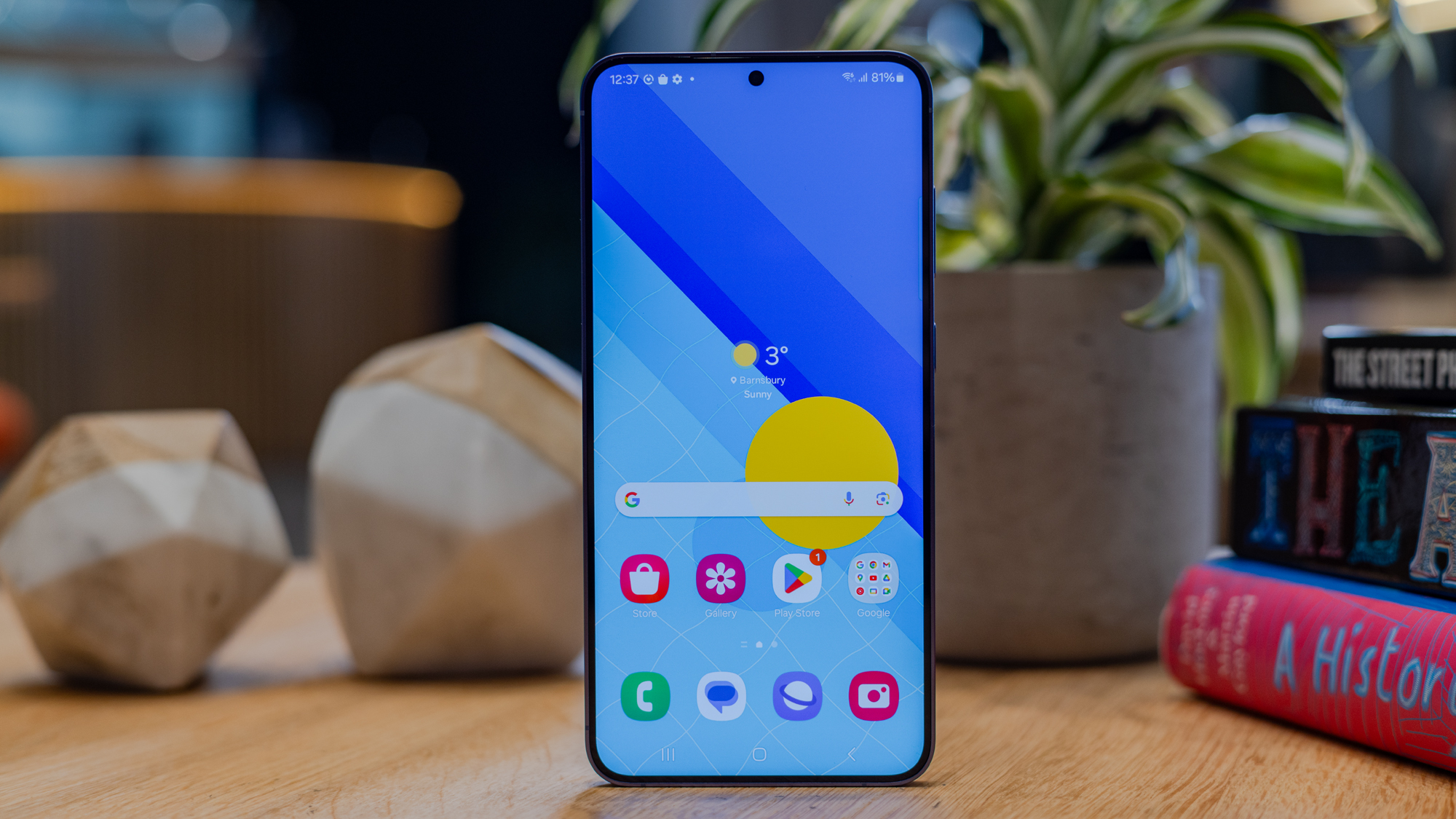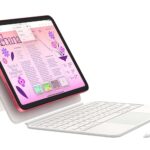If there’s one debate in tech which regularly hits the headlines, it’s Android vs iPhone.
Many people have very strong opinions on which is ‘best’, though in reality, that answer will be different for everyone. If you have Apple products already, an iPhone is undoubtedly the best choice.
But as you can see from our overall best phones round-up, most run Android. This makes sense: while Apple is the only company that makes devices running iOS, there are loads of Android phone makers out there, each with lots of different models.
However, that makes your decision on which to go for more difficult. In this article, we aim to make the process of choosing the right one as easy as possible. We’ve reviewed and ranked the 10 best Android phones you can buy right now, alongside detailed buying advice at the bottom of the page.
There are some cheaper options here, but if you have a specific budget in mind, see our separate guides to the best budget phones and best mid-range phones.
Why you should trust us: Android phone reviews and buying advice have been a staple of Tech Advisor’s coverage since the operating system made its first headlines in 2008.
We’ve guided you through 2G, 3G, 4G and 5G; we’ve reported on the rise and fall of Windows Phone, BlackBerry phones and LG phones.
We’ve seen Android phone makers scramble to offer the biggest, brightest, highest-resolution, fastest-refreshing, toughest, flexible, foldable and even three-dimensional displays; we’ve seen an arms race in processors and graphics in the quest for the ultimate mobile performance; a long-running game of how many cameras – and then how many megapixels – they can first squeeze on to the handset, and later hide out of sight; a push for batteries that can go – never mind all day – but all week; and new technologies that enable water resistant and vastly improve audio.
We’ve held your hand through a fascinating journey of mobile hardware, and today – some 16 years later – it’s the software smarts and once impossible to imagine AI capabilities that glue us to this path. We perform in-depth, real-world testing on every new Android model that’s worth buying (dozens every single year), adopting it as our primary phone for the most authentic experience possible and making sure we are in a position to give you the best possible phone buying advice.
Best Android phones 2024
1. Samsung Galaxy S24 Ultra – Best overall
Pros
- Seven years of updates
- Excellent, versatile cameras
- Very good battery life
- Clever AI features
- Built-in S Pen stylus
Cons
- Expensive
- Big and bulky
- Charging still only 45W
Price When Reviewed:
From $1,299.99
The Galaxy S24 Ultra is the best phone you can buy, so it should come as no surprise to see it top this list.
It’s arguably the ultimate smartphone, packing almost every premium feature you can expect into one huge device. However, the gorgeous 6.8-inch display and built-in S Pen stylus are certainly worth it.
Other highlights include sublime performance from an overclocked version of the flagship Snapdragon 8 Gen 3 chipset and strong battery life from the 5000mAh cell. The cameras might not be the best on any smartphone, but they’re not far off, offering impressive versatility across four lenses.
Samsung’s One UI software is intuitive and relatively easy to use, and the company’s new AI features are genuinely useful. Throw in a class-leading seven years of updates and you’ve got yourself a superb phone.
Aside from the imposing design and relatively slow charging, the price tag is the main thing that counts against the S24 Ultra. But if you can afford it, you won’t be disappointed.
Read our full
Samsung Galaxy S24 Ultra review
2. Xiaomi 14 Ultra – Best cameras

Pros
- Incredible photography
- Stunning vegan leather design
- Gorgeous curved screen
- Flawless performance
- 90W fast charging
Cons
- Expensive, with Photography Kit sold separately
- Mixed HyperOS software
Price When Reviewed:
Unavailable in the US
In the past, Xiaomi’s version of Android has often prevented us from recommending its phones. Despite a rebrand, the new HyperOS skin isn’t a big step forward, but it shouldn’t detract from just how good this phone is.
Undoubtedly, the highlight is the cameras. Alongside the Photography Kit accessory (sold separately), they transform the phone into a genuine DSLR replacement for many people. The image quality and versatility across all four 50Mp rear lenses and the 32Mp selfie camera is simply superb.
There’s lots more to like too, including a gorgeous display, stunning premium design and great performance. Battery life is strong, and you get a 90W fast charger in the box. From a hardware perspective, it’s hard to fault.
Aside from price, the main reason you might not want to buy it is Xiaomi’s HyperOS software, which still contains a lot of bloatware and can get frustrating. But if you can look beyond this, the 14 Ultra will give you an unrivalled photography experience.
Looking for something more affordable? The regular Xiaomi 14 is also a great choice.
Read our full
Xiaomi 14 Ultra review
3. Oppo Find X8 Pro – Superb cameras

Pros
- Awesome camera system
- Great battery life
- Super powerful
- New camera control button
- Useful AI features
Cons
- Smaller sensors than the Find X7 Ultra
- No autofocus on the selfie camera
- Magnetic charging only works with case
After Oppo decided not to release its Find X6 and Find X7 series flagships outside China, the Find X8 series marks a triumphant return to Europe.
Both the Find X8 and Find X8 Pro are excellent phones, but the latter has a slight upper hand. It’s powerful, good-looking, offers amazing battery life and has plenty of software perks.
But it’s the cameras that set it apart from rivals, and turn a great phone into a superb one. For pure image quality, it’s probably only the Xiaomi 14 Ultra that can rival it right now for UK buyers.
The phone isn’t without its compromises – there are a couple of small camera downgrades compared to the Find X7 Ultra, while the software takes some getting used to – but there’s no doubt that the Find X8 Pro is up there with the very best Android phones right now.
Read our full
Oppo Find X8 Pro review
4. Google Pixel 9 Pro XL – Best software

Pros
- Excellent cameras
- Gorgeous screen
- Superb software
- Seven years of updates
Cons
- More expensive than 8 Pro
- Slow charging
- Big and heavy
Price When Reviewed:
From $1,099
If neither of the options above appeals you to, a Pixel 9 is probably your best bet. And if you want the absolute best experience, the newly-branded Pixel 9 Pro XL is the one to go for.
While not quite the standout phone we saw with the Pixel 8 Pro, the 9 Pro XL still delivers a compelling experience in almost all key areas.
The cameras are the highlight once again, offering vibrant, high-contrast photos while maintaining key details. That includes in low-light conditions, even if the brightening is by no means true to life. A quality ultrawide lens and 5x optical zoom from the telephoto make it an impressively versatile camera system, while selfies from the upgraded front lens are excellent.
Elsewhere, the excellent 6.8-inch display is a joy to use, while Google’s Tensor G4 chipset delivers solid performance. And the build quality is higher than ever, even if the move to a more generic design will disappoint some people.
Google continues to ace the software experience, even if the 9 Pro XL runs Android 14 out of the box and AI features are hit-and-miss. Google’s commitment to seven years of both OS and security updates is still yet to be beaten on any phone.
Battery life is decent rather than a key strength, while 37W charging feels slow. Ultimately, whether you buy the 9 Pro XL depends on whether you think the even higher price tag is worth it.
If not, consider the Pixel 9 Pro or regular Pixel 9 instead, though there are downgrades to be aware of.
Read our full
Google Pixel 9 Pro XL review
5. OnePlus Nord 4 – Best value for money

Pros
- Premium build
- Great display
- Strong main camera
- Solid battery life
- Six years of updates
Cons
- Polarising design
- Disappointing ultrawide camera
- No telephoto camera
- Not available in the US
For a few years now, Google’s A-Series handsets have offered the best value for money in the entire smartphone. However, despite plenty of strengths, the Pixel 8a has been usurped in this regard by the OnePlus Nord 4.
That starts with superb build quality, with one piece of sturdy aluminium extending across the back and sides of the phone. At the front is a gorgeous 120Hz OLED screen, supplemented by strong performance and all-day battery life.
Provided you’re a fan of the design, the compromises here are concentrated around the cameras. There’s no telephoto lens, meaning zoom shots are disappointing, while the ultrawide OnePlus has opted for instead flatters to deceive.
However, if you primarily use the main lens anyway, you won’t be disappointed. And with six years of security updates, the Nord 4’s longevity is almost as good as the Pixel 8a’s.
Overall, it’s the leading choice if you’re in the market for a mid-range Android phone.
Read our full
OnePlus Nord 4 review
6. Motorola Razr 50 Ultra/Razr+ (2024) – Best foldable

Pros
- Incredible outer display
- Strong cameras
- Unique software features
- Solid battery life
Cons
- Rivals offer longer software support
- Can get noticeably warm
- Poor internal camera
Price When Reviewed:
$999
When you think of flip phones released in 2024, Samsung’s Galaxy Z Flip 6 is probably the first one that comes to mind. But while it is worth considering, the Motorola Razr 50 Ultra (known as the Razr+ (2024) in some markets) is a better choice for most people.
The 4-inch, 165Hz outer screen is the main reason for this. Not only is it significantly larger than rivals, you can run any app you like on it without any complicated workarounds. The 6.9-inch, 165Hz internal display is just as impressive, with a crease that’s barely noticeable.
While not quite as good as the best camera phones, the Razr 50 Ultra’s rear cameras can take great shots in a range of environments. However, Motorola has gone for 2x telephoto rather than ultrawide lens, while the internal selfie camera isn’t very good.
But with slick software (despite some cover screen bugs), solid battery life and decent charging speeds, Motorola is onto a winner. The Z Flip 6 is better in some areas, including long software support, but the Razr is a better all-round pick for most people.
If you’re looking for something more affordable, consider the regular Razr 50 instead. And if a book-style foldable is your preference, go for the Google Pixel 9 Pro Fold.
Read our full
Motorola Razr 50 Ultra review
7. OnePlus 12 – Best design

Pros
- Elegant, distinctive design
- Stellar screen
- Fast wired and wireless charging
- Great main and telephoto cameras
Cons
- Fewer OS updates than rivals
- Average ultrawide and selfie cameras
- Limited water resistance
Price When Reviewed:
From $799 | Model reviewed $899
The OnePlus 12 is significantly more expensive than the OnePlus 11, which was a great handset for the money. But this extra expense is justified – a stunning design, significant performance upgrade and the introduction of wireless charging make a real difference.
Its Snapdragon 8 Gen 3 chipset speeds through tasks with ease (including gaming), then combines with a 5400mAh battery for superb battery life. When you do run low, you can choose between 100W wired and 50W wireless charging, though the 80W charger in the box will be plenty fast enough for most people.
The 120Hz AMOLED screen is among the largest on any phone at 6.82-inches, but also one of the best. The slick software experience is also a joy to use, even if the four OS updates and five years of security updates is a small step down from the best around.
Rear cameras, a weakness of earlier OnePlus phones, are very good on the whole. But the ultrawide and selfie lenses aren’t the best, and the IP65 rating means it’s not protected against submersion in water.
Nonetheless, none of these should be dealbreakers for most people. The OnePlus 12 still undercuts many flagships on price, making it a great option.
Read our full
OnePlus 12 review
8. CMF Phone 1 – Best budget

Pros
- Unique, stylish design
- Bloat-free operating system
- Solid performance
- Fun accessories
Cons
- No NFC
- Limited water and dust resistance
- Simple cameras
Price When Reviewed:
$199
CMF, Nothing’s sub-brand, has previously focused on wearables and audio products.
But its first attempt at a smartphone is an undoubted success, combining a fun look with solid core features and an impressively low price tag – just £209/$199.
Its design is the clear highlight, with a back panel that can easily be swapped out and attachment for a lanyard, kickstand, or card wallet, all of which CMF sells as optional extras. However, even if you don’t care about any of that stuff, the Phone 1 has strong performance and an attractive display, both of which are must-haves on a modern smartphone.
Battery life is decent, while Nothing’s unique take on Android combines a unique look with no bloatware.
The lack of NFC (and so no support for contactless payments) is the biggest potential dealbreaker, while the cameras and water resistance could do with work. Samsung’s Galaxy A15 5G or A15 4G are the cheap phones to get if you value long software support, too.
But as a complete package, the CMF Phone 1 is the best all-rounder in the budget smartphone market right now.
Read our full
CMF Phone 1 review
9. Samsung Galaxy S24+ – Great all-rounder

Pros
- Great, large display
- Strong performance
- Incredible battery life
- Useful AI features
- Seven years of updates
Cons
- No S Pen support
- Limited storage options
- Relatively expensive
Price When Reviewed:
From $999
The middle phone in Samsung’s Galaxy S24 range isn’t quite the all-singing, all-dancing S24 Ultra, but it’s arguably a better phone for most people.
You still get most of the fundamentals of Samsung’s ultra-flagship, including a gorgeous large display, superb battery life, useful AI features and that class-leading seven-year update commitment.
US buyers will still get the overclocked Snapdragon 8 Gen 3 chipset, but even the Exynos 2400 in the UK delivers strong performance.
If you can do without a stylus or loads of storage but still want a Samsung flagship, the S24+ is the phone to get.
Read our full
Samsung Galaxy S24+ review
10. Google Pixel 9 Pro Fold – Best book-style foldable
Pros
- Great displays
- Very good rear cameras
- Useful software features
- Premium, durable design
Cons
- Not the best battery life
- Few apps optimised for big screen
- Expensive
Price When Reviewed:
$1799
The Pixel 9 Pro Fold is a vast improvement on the previous model and one of the most polished and premium-feeling foldable handsets on the market today.
Despite having a slower processor and fewer software features, it’s a better pick than the Galaxy Z Fold 6 overall. And while the Honor Magic V3 has a superior design, it’s let down by disappointing software, an area where the Pixel excels.
Other key strengths of the 9 Pro Fold include the excellent cameras we’ve come to associate with Pixel devices, plus two very good displays. The 9 Pro Fold can slot into your life more seamlessly than most folding phones.
However, Google’s Tensor G4 doesn’t quite excel when it comes to performance, while charging is frustratingly slow. These might be dealbreakers for you at this price point, but it’s still the best book-style foldable overall.
Android phones buying advice
Which version of Android is the latest?
The latest version of Android right now is Android 15, which launched in 2024.
However, it often takes some time for Android brands to update their phones, so many phones launched in 2023, and even some cheaper 2024 models, will still be running Android 14 for a while.
The next version, Android 16, should launch in 2025, but will take some time to roll out to handsets.
Do all Android phones run the same software?
Yes and no. They all run Android of course, but there are variations within that. Every manufacturer tweaks Android to produce its own version – often called an ‘Android skin’.
For example, Samsung phones run One UI, OnePlus phones are on OxygenOS, and Xiaomi phones run HyperOS (which replaced MIUI).
Phones that run software close to Google’s own are often described as running ‘stock’, but in truth even the Google Pixel phones run their own unique spin on the software. Each of these offers a unique aesthetic and a range of specific features, so you should always try and learn a little about a brand’s software before you commit to a phone.
It’s also important to remember that not every Android phone gets equal updates. Every manufacturer promises a different number of updates for their devices – usually separated into Android feature updates and security patches – and generally speaking more expensive phones are supported for longer than cheaper devices.
At the time of writing, the best brand in this regard is Google, which offers up to seven years of both, but many rivals aren’t far behind.
Which specs matter the most?
With more Android phones out there, there are also more specs to pick between. There’s no hard-and-fast rule about what matters most, so instead think about your priorities.
Do you care most about fast and smooth performance? Perhaps you prioritise longer battery life, or faster charging speeds? Maybe a capable camera is the main thing you look for?
Most Android phones will offer some combination of the above – and more – but there will always be certain specs where they compromise. Deciding on your priorities is the first step in picking a phone.
Are Android phones better than iPhones?
This argument has waged for over a decade, and it won’t end any time soon. For now, let’s just say that each has its advantages.
There’s more variety in Android phones, giving consumers a lot more choice – including unusual options like foldable phones or devices designed for gaming.
Certain hardware features also tend to be better on Android. The majority of modern Android phones charger faster – often a lot faster – than even the latest iPhones, and fast refresh rate displays have also become common. Look to the really top end and you’ll also find that by and large the best camera phones run Android, though Apple still has the edge when it comes to recording video.
On the other hand, Apple’s carefully controlled ecosystem means iPhones often have fewer bugs and inconsistencies than Android devices, and there’s a level of polish to both the software and hardware that few Android rivals match. Apple’s long-term software support also outstrips the vast majority of Android.
Why isn’t every Android phone available where I live?
This is a complicated question, and every manufacturer approaches it differently. If you live in Europe or Asia, you’ll likely find that most – albeit not all – Android phones launch where you live. Markets such as Africa and South America get a slightly different selection, while in North America there are only very few brands, with almost none of the Chinese manufacturers.
Ultimately, each manufacturer has to decide which markets will be profitable for them, which comes down to a combination of market sizes, local regulations, and the power that networks have – in the US, for example, it’s the strict control carriers exert that keeps most Chinese companies out.
Read the full article here












